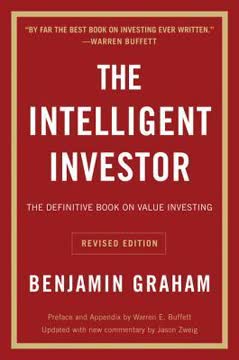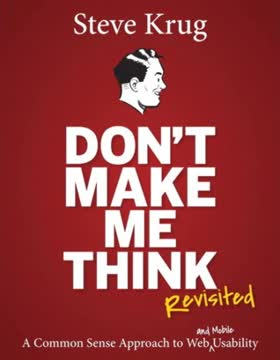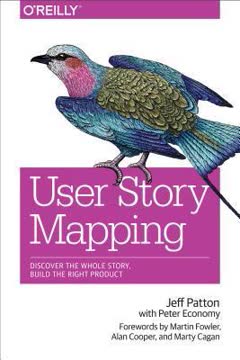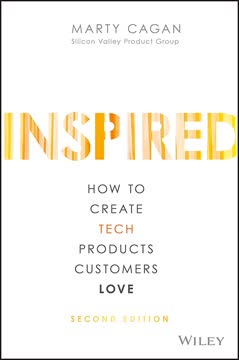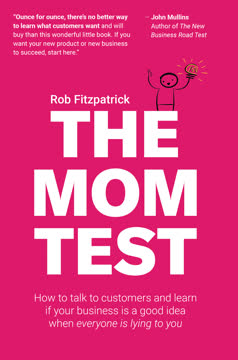نکات کلیدی
1. مالک محصول: دیدگاهپرداز و تصمیمگیرنده در توسعه چابک
مالک محصول یک دیدگاهپرداز است که میتواند محصول نهایی را تصور کرده و این دیدگاه را منتقل کند.
نقش چندوجهی. مالک محصول در اسکرام نقشی حیاتی است که مسئولیتهای یک مدیر محصول سنتی، مدیر پروژه و نماینده مشتری را ترکیب میکند. این فرد مسئولیتهای زیر را بر عهده دارد:
- ایجاد و حفظ دیدگاه محصول
- مدیریت فهرست کارهای محصول
- برنامهریزی انتشارها
- همکاری با ذینفعان
- اتخاذ تصمیمات کلیدی درباره ویژگیها و اولویتهای محصول
ویژگیهای ضروری. یک مالک محصول موفق باید دارای ویژگیهای زیر باشد:
- مهارتهای رهبری و ارتباطی قوی
- درک عمیق از نیازهای مشتری و روندهای بازار
- توانایی اتخاذ تصمیمات سخت و اولویتبندی مؤثر
- تعهد به همکاری نزدیک با تیم توسعه
2. ایجاد یک دیدگاه محصول جذاب: نقشه راه برای موفقیت
دیدگاه هنر دیدن چیزهای نامرئی است.
چراغ راهنما. یک دیدگاه محصول به عنوان ستاره شمالی برای کل تلاش توسعه عمل میکند و جهت و الهامبخشی برای تیم فراهم میکند. یک دیدگاه مؤثر باید:
- به سوالات کلیدی درباره مشتریان هدف، مزایای محصول و موقعیتیابی بازار پاسخ دهد
- توسط همه اعضای تیم و ذینفعان به اشتراک گذاشته و درک شود
- به اندازه کافی گسترده باشد تا اجازه خلاقیت و تطبیقپذیری را بدهد
ایجاد دیدگاه. تکنیکهای توسعه یک دیدگاه جذاب شامل موارد زیر است:
- نمونهها و مدلهای اولیه
- شخصیتها و سناریوها
- جعبه دیدگاه و بررسی مجله تجاری
- مدل کانو برای شناسایی ویژگیهای جذاب و اصلی
3. محصول حداقلی قابل عرضه: ارائه ارزش سریعتر
اگر یک ایده متوسط را به یک تیم عالی بدهید، آنها یا آن را اصلاح میکنند یا کنار میگذارند و چیزی که کار میکند را ارائه میدهند.
تمرکز بر ضروریات. مفهوم محصول حداقلی قابل عرضه (MMP) بر ارائه کوچکترین مجموعه ممکن از ویژگیها که همچنان به مشتریان ارزش میدهد، تأکید دارد. مزایای این رویکرد شامل موارد زیر است:
- زمان سریعتر به بازار
- کاهش هزینههای توسعه
- بازخورد زودهنگام مشتری
- بهبود کاهش ریسک
رشد تدریجی. با شروع با یک MMP و تکرار بر اساس بازخورد مشتری، تیمها میتوانند:
- از پیچیدگی بیش از حد و تورم ویژگیها جلوگیری کنند
- به سرعت به شرایط متغیر بازار تطبیق یابند
- محصولی بسازند که واقعاً نیازهای مشتری را برآورده کند
4. تسلط بر فهرست کارهای محصول: رویکرد DEEP
فهرست کارهای محصول به زیبایی ساده است—یک لیست اولویتبندی شده از کارهای باقیمانده که برای به زندگی آوردن محصول ضروری است.
ویژگیهای DEEP. یک فهرست کارهای محصول مؤثر باید:
- به طور مناسب جزئیات داشته باشد: آیتمهای با اولویت بالاتر جزئیات بیشتری دارند
- برآورد شده باشد: آیتمها به گونهای اندازهگیری شدهاند که برنامهریزی را تسهیل کنند
- در حال ظهور باشد: فهرست با جمعآوری اطلاعات جدید تکامل مییابد
- اولویتبندی شده باشد: آیتمها بر اساس اهمیت و ارزش مرتب شدهاند
آمادهسازی مشترک. جلسات منظم آمادهسازی فهرست کارها که شامل کل تیم اسکرام میشود، به موارد زیر کمک میکند:
- کشف و توصیف آیتمهای جدید
- اصلاح آیتمهای موجود
- اولویتبندی فهرست کارها
- آمادهسازی آیتمها برای اسپرینتهای آینده
5. برنامهریزی انتشار مؤثر: تعادل زمان، هزینه و عملکرد
برنامهریزی ... جستجویی برای ارزش است.
رویکرد انعطافپذیر. برنامهریزی انتشار چابک بر ارائه ارزش در حالی که انعطافپذیری را حفظ میکند، تمرکز دارد. اصول کلیدی شامل موارد زیر است:
- ثابت نگه داشتن زمان و هزینه در حالی که عملکرد را انعطافپذیر میکند
- حفظ کیفیت ثابت در طول توسعه
- استفاده از نقشه راه محصول برای هدایت برنامهریزی بلندمدت
تکنیکهای برنامهریزی. برنامهریزی انتشار مؤثر شامل موارد زیر است:
- تعیین تاریخهای انتشار واقعبینانه بر اساس دیدگاه محصول
- استفاده از سرعت برای پیشبینی پیشرفت
- ایجاد و حفظ نمودار کاهش انتشار
- تطبیق برنامه بر اساس بازخورد مشتری و تغییر اولویتها
6. سرعت و کاهش انتشار: پیگیری پیشرفت و پیشبینی
نرمافزار کارکردی معیار اصلی پیشرفت است.
اندازهگیری سرعت. سرعت یک معیار کلیدی در اسکرام است که نشاندهنده مقدار کاری است که یک تیم میتواند در یک اسپرینت انجام دهد. از آن برای:
- پیگیری پیشرفت تیم
- پیشبینی ظرفیتهای اسپرینت آینده
- کمک به برنامهریزی انتشار
کاهش انتشار. نمودار یا نوار کاهش انتشار نمایشی بصری از پیشرفت پروژه ارائه میدهد و نشان میدهد:
- تلاش باقیمانده در فهرست کارهای محصول
- کار انجام شده در طول زمان
- تاریخ تکمیل پیشبینی شده بر اساس سرعت فعلی
این ابزارها به تیمها کمک میکنند تا مسائل احتمالی را زودتر شناسایی کرده و تنظیمات لازم را برای دستیابی به اهداف انتشار انجام دهند.
7. انتشارهای زودهنگام و مکرر: کلید رضایت مشتری
اولویت بالای ما رضایت مشتری از طریق تحویل زودهنگام و مداوم نرمافزار ارزشمند است.
حلقه بازخورد مداوم. انتشار زودهنگام و مکرر بخشهای محصول مزایای متعددی دارد:
- فرضیات محصول را با بازخورد واقعی کاربران اعتبارسنجی میکند
- اجازه اصلاح سریع مسیر در صورت نیاز را میدهد
- اعتماد و تعامل مشتری را میسازد
- یادگیری و نوآوری را تسریع میکند
چالشهای پیادهسازی. برای حمایت از انتشارهای مکرر، تیمها باید:
- استانداردهای کیفیت نرمافزار بالا را حفظ کنند
- فرآیندهای استقرار کارآمد را پیادهسازی کنند
- ویژگیها را در بخشهای کوچک و قابل انتشار توسعه دهند
- کانالهای ارتباطی واضح با مشتریان برقرار کنند
8. مقیاسگذاری چابک: استراتژیها برای پروژهها و سازمانهای بزرگ
از یک فهرست کارهای محصول استفاده کنید.
ملاحظات مقیاسگذاری. با رشد پروژهها و سازمانها، چالشهای اضافی در پیادهسازی اسکرام به وجود میآید. استراتژیهای کلیدی برای مقیاسگذاری شامل موارد زیر است:
- حفظ یک فهرست کارهای محصول واحد، حتی برای پروژههای بزرگ
- پیادهسازی سلسلهمراتب مالکین محصول برای محصولات پیچیده
- گسترش افق آمادهسازی برای نگاه به جلو 2-3 اسپرینت
- ارائه دیدگاههای خاص تیم به فهرست کارهای محصول
همراستایی سازمانی. مقیاسگذاری موفق نیازمند:
- حمایت قوی رهبری
- کانالهای ارتباطی واضح بین تیمها
- فرآیندها و ابزارهای سازگار در سراسر سازمان
- هماهنگی و همکاری منظم بین تیمها است.
آخرین بهروزرسانی::
FAQ
What's "Agile Product Management with Scrum" about?
- Focus on Product Owners: The book provides a comprehensive guide for product owners in Scrum, detailing their roles, responsibilities, and how they can effectively manage product backlogs.
- Practical Advice: It offers practical insights and techniques for product owners to maximize the value of their products through effective Scrum practices.
- Vision and Leadership: The book emphasizes the importance of having a strong product vision and the leadership qualities required to guide a Scrum team.
- Iterative and Incremental Approach: It explains how to use Scrum's iterative and incremental nature to create products that customers love.
Why should I read "Agile Product Management with Scrum"?
- Role Clarity: It provides clarity on the product owner role, which is often misunderstood or underrepresented in agile projects.
- Expert Insights: The book is written by Roman Pichler, a leading expert in agile product management, offering valuable insights and real-world examples.
- Comprehensive Guide: It covers all aspects of agile product management, from envisioning the product to release planning and collaboration in sprint meetings.
- Practical Tools and Techniques: Readers will gain access to practical tools and techniques that can be directly applied to their Scrum projects.
What are the key takeaways of "Agile Product Management with Scrum"?
- Product Owner Role: Understanding the multifaceted role of the product owner and the importance of empowerment and collaboration.
- Vision and Simplicity: The significance of having a clear product vision and focusing on simplicity to create minimal marketable products.
- Release Planning: The importance of fixing time and quality while flexing functionality to ensure successful product releases.
- Continuous Improvement: Emphasizing the need for regular reflection and adaptation through sprint retrospectives and stakeholder feedback.
What are the best quotes from "Agile Product Management with Scrum" and what do they mean?
- "Vision is the art of seeing things invisible." This quote highlights the importance of having a clear and compelling product vision that guides the development process.
- "Good business leaders create a vision, articulate the vision, passionately own the vision, and relentlessly drive it to completion." It underscores the leadership qualities required of a product owner to successfully guide a Scrum team.
- "Our highest priority is to satisfy the customer through early and continuous delivery of valuable software." This reflects the agile principle of delivering value to customers through frequent releases and feedback loops.
- "Plans are nothing; planning is everything." This emphasizes the importance of the planning process in adapting to change and ensuring project success.
How does Roman Pichler define the product owner role in "Agile Product Management with Scrum"?
- Central Role: The product owner is the central figure responsible for managing the product backlog and ensuring the value of the work performed by the team.
- Visionary and Doer: They must be both a visionary who can envision the final product and a doer who sees the vision through to completion.
- Leader and Team Player: The product owner provides guidance and direction while collaborating closely with the Scrum team.
- Empowered and Committed: They must have the authority to make decisions and be fully committed to the development effort.
What practical advice does "Agile Product Management with Scrum" offer for product backlog management?
- DEEP Qualities: The product backlog should be Detailed Appropriately, Estimated, Emergent, and Prioritized.
- Collaborative Grooming: Product backlog grooming is a collaborative process involving the entire Scrum team to ensure clarity and buy-in.
- Prioritization Factors: Prioritize backlog items based on value, knowledge, uncertainty, risk, releasability, and dependencies.
- Just-in-Time Detailing: Prepare just enough items just in time for the upcoming sprint to maintain flexibility and adaptability.
How does "Agile Product Management with Scrum" suggest handling nonfunctional requirements?
- Early Detailing: Global nonfunctional requirements should be detailed early on to avoid impacting product success.
- Incorporation in Definition of Done: Include nonfunctional requirements in the definition of done to ensure every increment meets quality standards.
- Local Requirements: Attach local nonfunctional requirements directly to specific functional requirements as constraints.
- Continuous Management: Regularly review and manage nonfunctional requirements as part of the product backlog grooming process.
What does "Agile Product Management with Scrum" say about release planning?
- Fix Time and Quality: The book advises fixing time and quality while allowing functionality to be flexible to meet release goals.
- Early and Frequent Releases: Emphasizes the importance of releasing product increments early and frequently to gather customer feedback.
- Velocity Tracking: Use velocity as a measure of the team's capacity to plan and forecast project progress.
- Release Burndown: Utilize release burndown charts to track and adapt the project based on remaining effort and time.
How does "Agile Product Management with Scrum" recommend collaborating in sprint meetings?
- Active Participation: Product owners should actively participate in sprint meetings to provide feedback and ensure alignment with the product vision.
- Definition of Done: Establish a clear definition of done to guide the team's work and ensure quality.
- Sprint Review: Use sprint review meetings to gather stakeholder feedback and adapt the product accordingly.
- Sprint Retrospective: Participate in sprint retrospectives to identify improvement measures and enhance team collaboration.
What are the common mistakes in product ownership according to "Agile Product Management with Scrum"?
- Underpowered Product Owner: Lacking the necessary authority and support to make decisions and align stakeholders.
- Overworked Product Owner: Being overburdened with responsibilities, leading to bottlenecks and project delays.
- Distant Product Owner: Working separately from the team, resulting in miscommunication and misalignment.
- Proxy Product Owner: Using a placeholder for the actual product owner, causing delays and conflicts.
How does "Agile Product Management with Scrum" address transitioning into the product owner role?
- Know Yourself: Reflect on your skills and identify areas for development to effectively transition into the role.
- Develop and Grow: Embrace the agile work ethos and continuously improve through training and feedback.
- Get a Coach: Benefit from coaching or an apprenticeship model to learn the ropes and gain confidence.
- Ensure Sponsorship: Secure management support and empowerment to effectively fulfill the product owner responsibilities.
What organizational changes does "Agile Product Management with Scrum" suggest for successful product ownership?
- Recognize Importance: Senior management must recognize the authority and impact of the product owner role.
- Select Right Product Owners: Carefully choose product owners based on the product, domain, and project size.
- Empower and Support: Provide training, coaching, and empowerment to help product owners succeed.
- Sustain Application: Develop organizational capabilities to grow and support product owners, including career paths and development programs.
نقد و بررسی
کتاب مدیریت محصول چابک با اسکرام نقدهای متفاوتی دریافت کرده است و بهطور میانگین امتیاز 3.83 از 5 را کسب کرده است. بسیاری از خوانندگان آن را برای درک نقش مالک محصول، بهویژه برای مبتدیان، مفید میدانند. کتاب بهخاطر توضیحات واضح و توصیههای عملیاش مورد تحسین قرار گرفته است. با این حال، برخی آن را به دلیل ساده بودن بیش از حد یا کمبود عمق در برخی زمینهها مورد انتقاد قرار میدهند. خوانندگان بخشهای مربوط به اشتباهات رایج و تمرکز بر مسئولیتهای مالک محصول را میپسندند. برخی پیشنهاد میکنند که این کتاب بیشتر به عنوان یک مرجع سریع یا مقدمهای بر نقش مالک محصول مناسب است تا یک راهنمای جامع.
Similar Books

